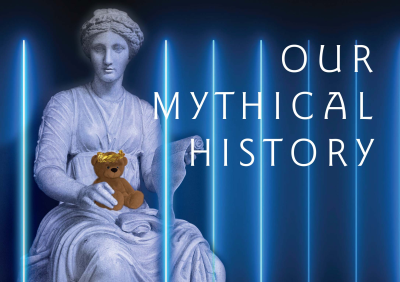Our Mythical History
Herodotus, the Father of History, and Thucydides, the first “modern” historian, taught us two approaches, ones apparently contradictory: that we should not and that we should rigorously separate historical from mythological narration. The ancient Greek philosophers Hecataeus of Miletus and Euhemerus of Messene, in turn, as if to complicate the issue even further, proposed the first methods on how to individuate the elements of real events and people in myths and thus to deprive them of their metaphysical dimension.
The ancient tradition verges on the threshold between Myth and History. It is often impossible to tell the difference between these two realms. I would even venture to state that – in the context of reception studies – it is unnecessary to attempt as much, for it is in this ambiguity of experience that the force of Classical Antiquity in our times lies. And not by chance is the adjective “mythical” in the title of our meeting this year: Our Mythical History: Children’s and Young Adults’ Culture in Response to the Heritage of Ancient Greece and Rome. As this conference will show, ancient culture – whether in the form of a renarration on great historical personages and events of Classical Antiquity or as a component of a narrative regarding later historical periods – mythologizes and transfers human deeds to the sphere of the eternal battle between Good and Evil. All on Earth suddenly makes sense, even if the thrill of terror remains.
This year, the artistic reinterpretation by the Polish graphic artist and painter Zbigniew Karaszewski – namely, the Muse of history Clio with a teddy bear in a laurel wreath – invites us to rethink the ancient heritage anew. Each and every one of us has his/her own history – a history of our countries, families, smaller or bigger communities. Most of us also had a teddy bear, a favourite toy, one even today still with us, or gathering dusting somewhere in the attic, or given away to please other children. Irrespectively of its fate, the teddy bear in a laurel wreath reminds us of keeping the child-like faith in our ancient masters (the same root as in Historia magistra vitae). If we read their texts, and earlier their adaptations for youth, we can hope to arrive to our own Troy someday, as one of the protagonists whose biography for children will be presented during this conference – spoiler alert: a German polyglot merchant. Our Mythical History teaches us to strive for more, to dream of greater things that, even if not frequent or easily achievable, are nonetheless within our reach.
Katarzyna Marciniak

Zbigniew Karaszewski, Clio with a Teddy-Bear (2019)








